Tea Making: A Fine Art
BOH Produces Over 4 Million Kgs Of Tea Annually. That’s 5.5 Million Cups Daily!
Behind every cup of BOH is a fine-tuned process with meticulous attention to quality. BOH uses a combination of traditional and modern methods to harvest and produce authentic Malaysian teas of distinctive character, flavour and aroma. The quality of tea depends on the inherent characteristics of the leaf brought into the factory, which in turn depend on:
It’s impossible to make good quality tea out of a poor quality leaf. However, the method of processing, skill and care employed in the factory contribute greatly. The basic process from start to finish usually takes two days to complete, but before the dried tea is packed and dispatched for sale, it needs to be matured for a short period.
Learn The Fine Art Of Making Tea The BOH Way


Planting
The propagation of Boh tea plants begins with the careful selection of tea bush cuttings which are rooted and nurtured in shaded nurseries for a year until ready for planting in the field. For the next 3 to 5 years the young tea bushes are carefully shaped and pruned to form a ‘table’ for plucking. Under ideal conditions like those found in Cameron Highlands, tea bushes can live up to 100 years.

Plucking
Tea bushes are regularly picked throughout the year when new shoots grow or “flush”. Experienced Boh pickers can harvest over 200kg of green leaves a day – enough to make 45kg of tea. Upon checking for quality, the leaves are weighed and transported to the factory to undergo a 5-stage process.
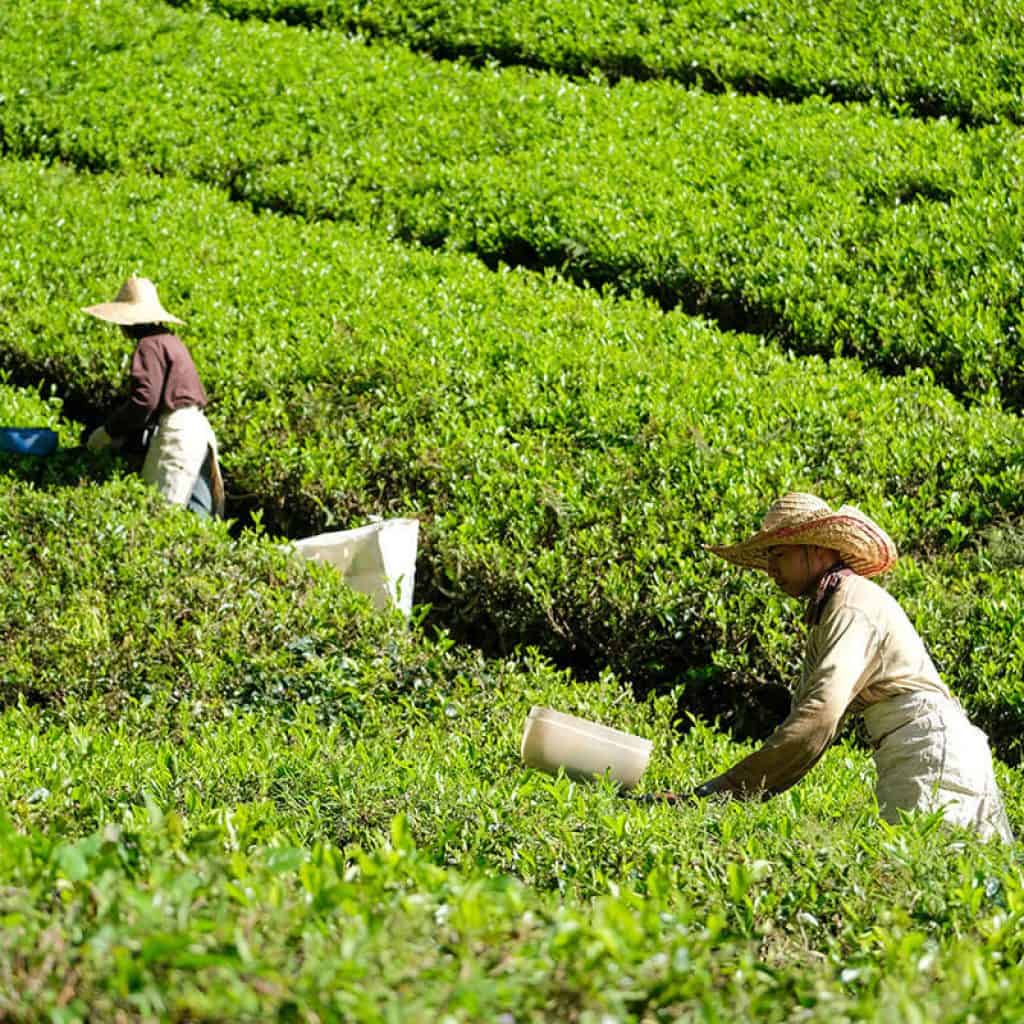
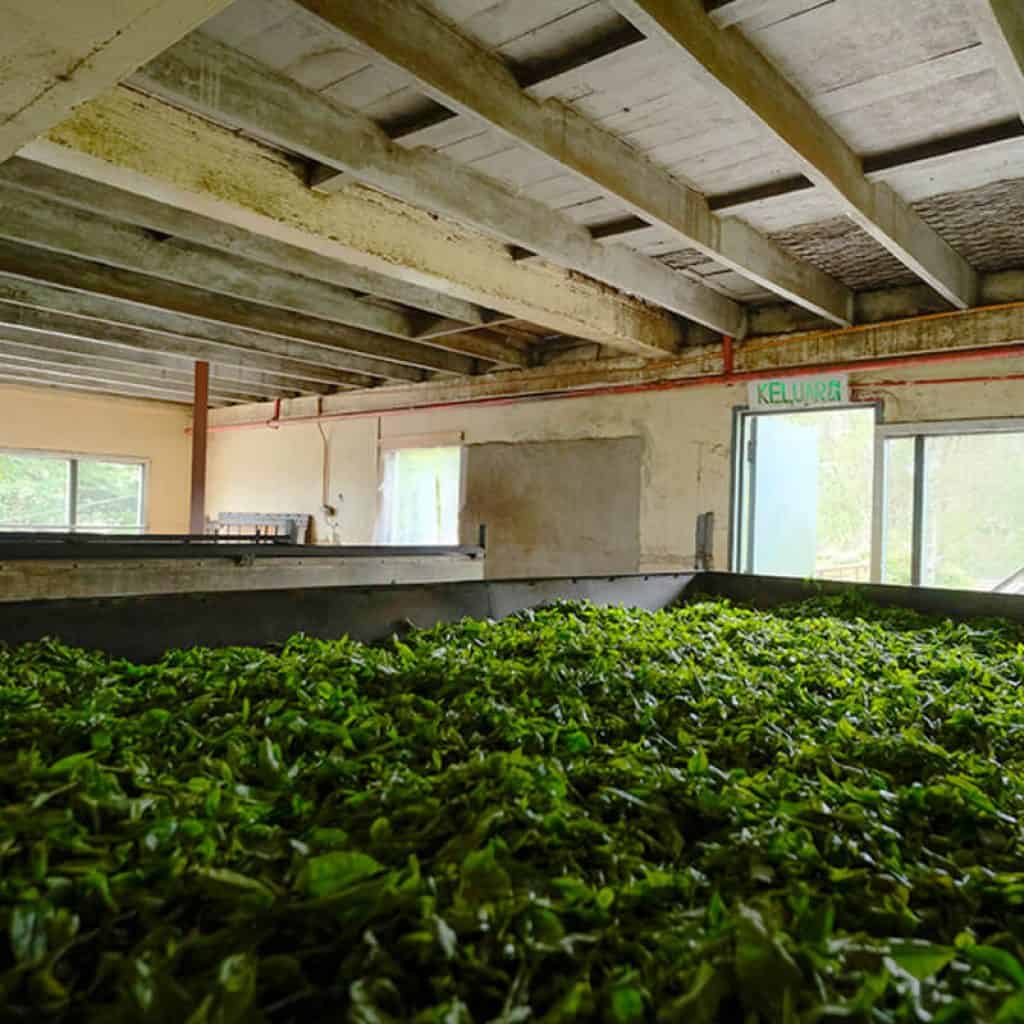

Withering
Tea can be made from unwithered or withered leaf, the difference lies in the flavour, with the former producing a ‘brassy’ flavour, and the latter a more mellow flavour. When fresh leaf is brought into the factory, it has a moisture content of about 75-80%. Leaves are withered to reduce the moisture content so the leaf can be twisted and rolled in the next process without being broken into flakes. There is also a second and more important natural chemical process which takes part in the leaf, vital to the quality of the final product.
In the BOH factory, withering is achieved by spreading the leaf in troughs with perforated beds through which dry air is blown. The process normally takes between 12 – 20 hours overnight. Thus, leaf brought in one day proceeds to the next stage of manufacture the next day.

Rolling
The purpose of rolling is to crush the leaf cells, liberate the juices contained in them and expose these juices to oxygen. 3 types of machines are used – Rotovanes, rollers and CTC (Cut, Tear & Curl).
In ancient China, the method of tea processing evolved where withered leaf was labouriously rolled between the palms of a person’s hands, whereas in the early days of tea growing in India, a machine called a roller was invented which churned the tea round and round imitating the hand action: Rollers which imitate the hand movement, are still used at the Company’s Sungei Palas factory till today.
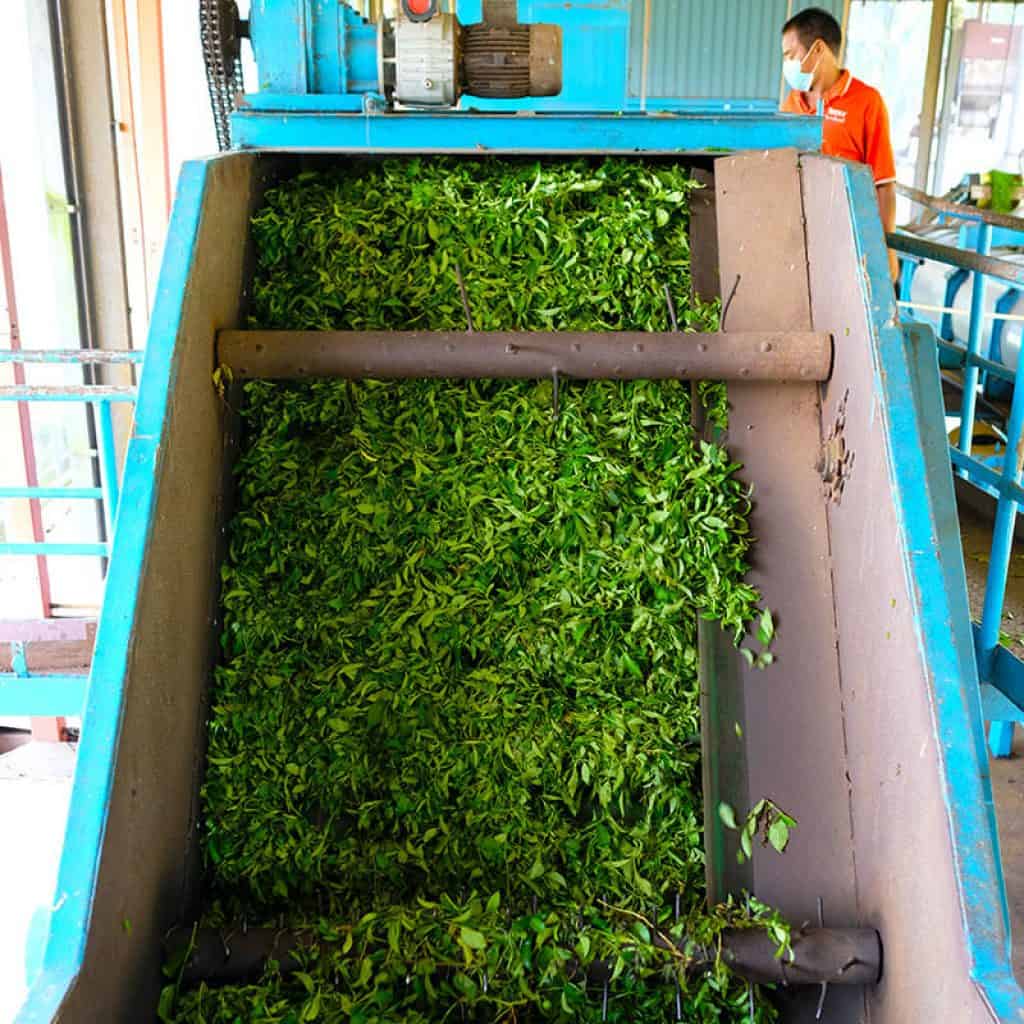
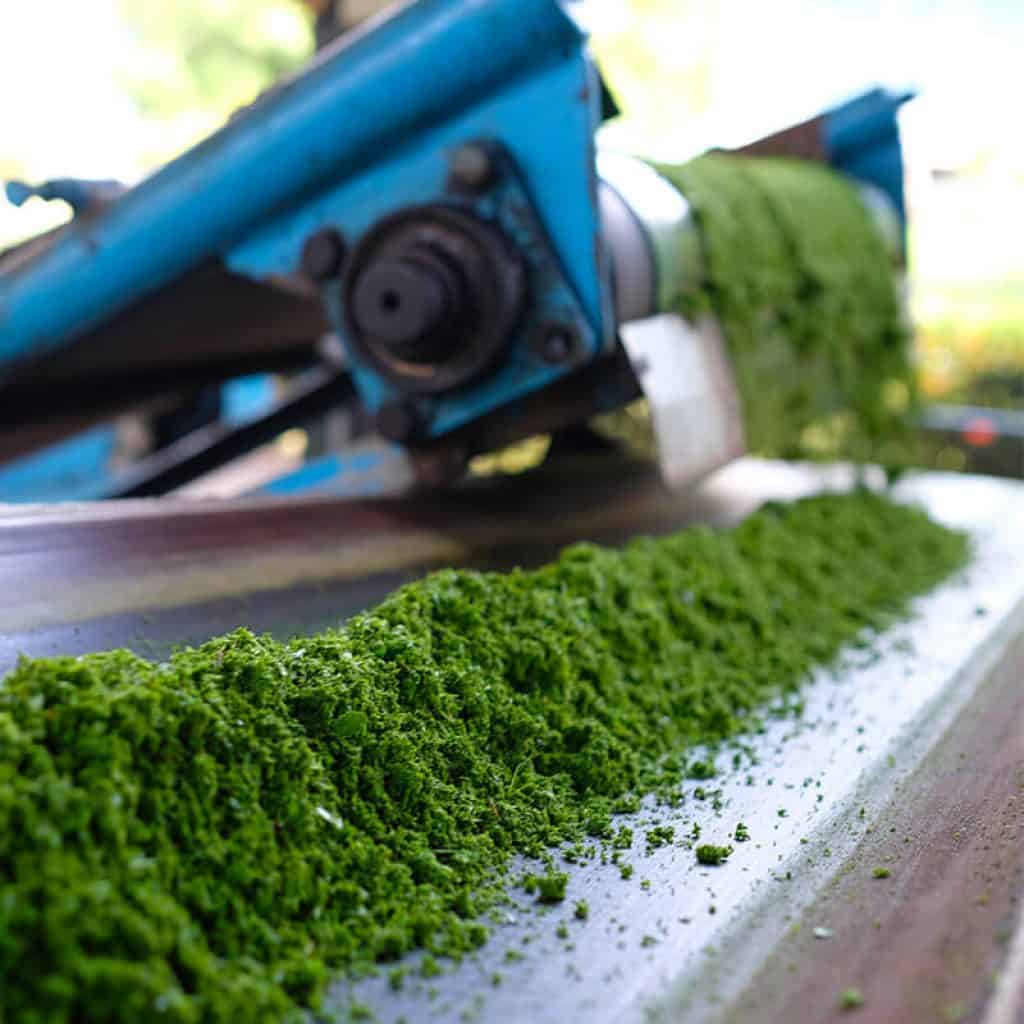

Fermentation
This natural chemical process (more accurately called oxidation) occurs after the leaf cells have been ruptured and atmospheric oxygen naturally reacts with the leaves. This process takes typically about two hours. The process is simple-just spreading the leaf on trays of slow moving conveyors. It is critical to the quality of made tea because it at this stage of manufacture when character, flavour, aroma and colour are brought to the fore, thus careful control of timing and temperature are critical components in the process.
At the start of the process, the leaves are green, but as fermentation occurs, a copper-coloured dhool is created and the characteristic aroma of tea develops. The traditional skill of the tea maker lies in knowing when the process has progressed to the point of maximum development of flavour and aroma and when it should be arrested by drying.

Drying
The drying process takes about ten minutes and is achieved by passing hot air through the fermented leaf. This halts the fermentation process and reduces the moisture content from about 60% to about 3%.
Two types of drying machines are used at BOH. Endless Chain Plate Driers, where the leaf is conveyed through the machine on moving trays and a Vibrating Fluid Bed Drier where the leaf is fluidized and flows through the machine. This crystallizes the juices thereby leaving it crisp, black and curled, leading to its familiar appearance.
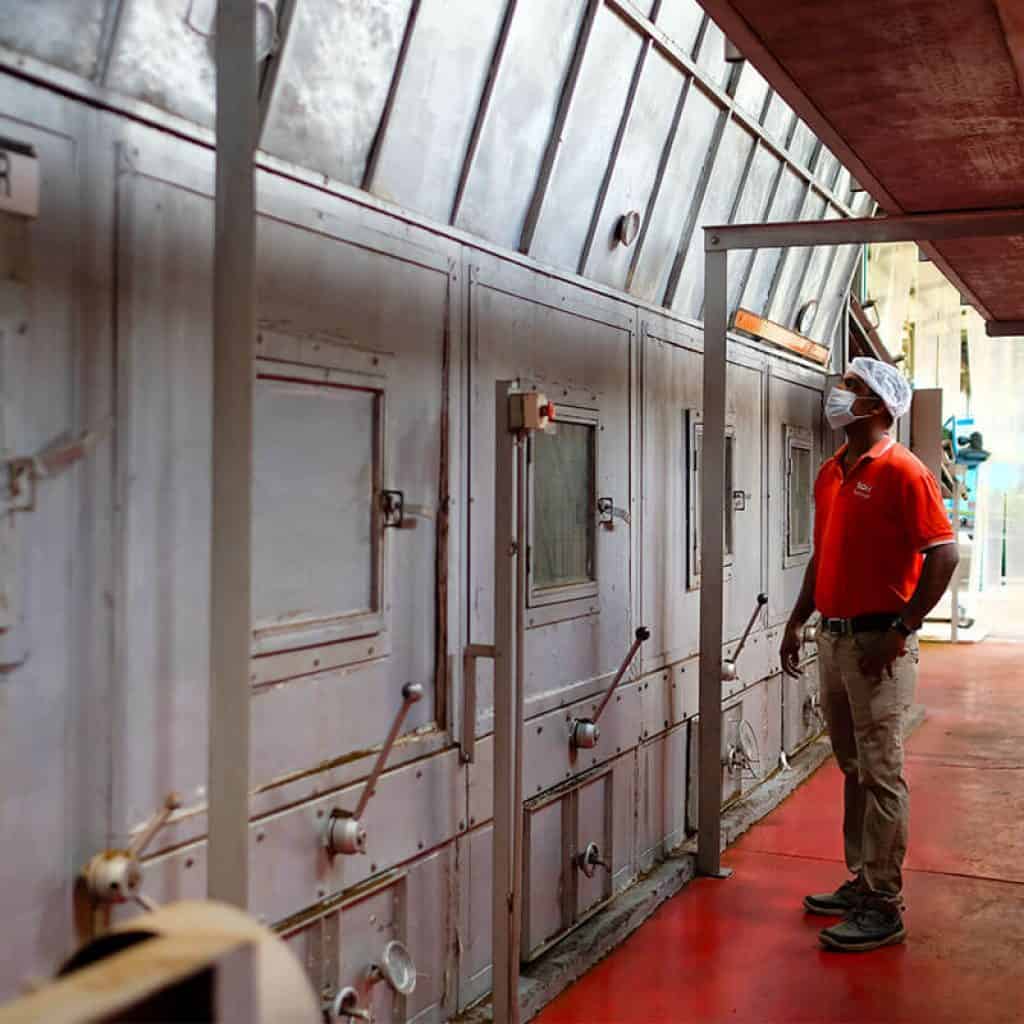
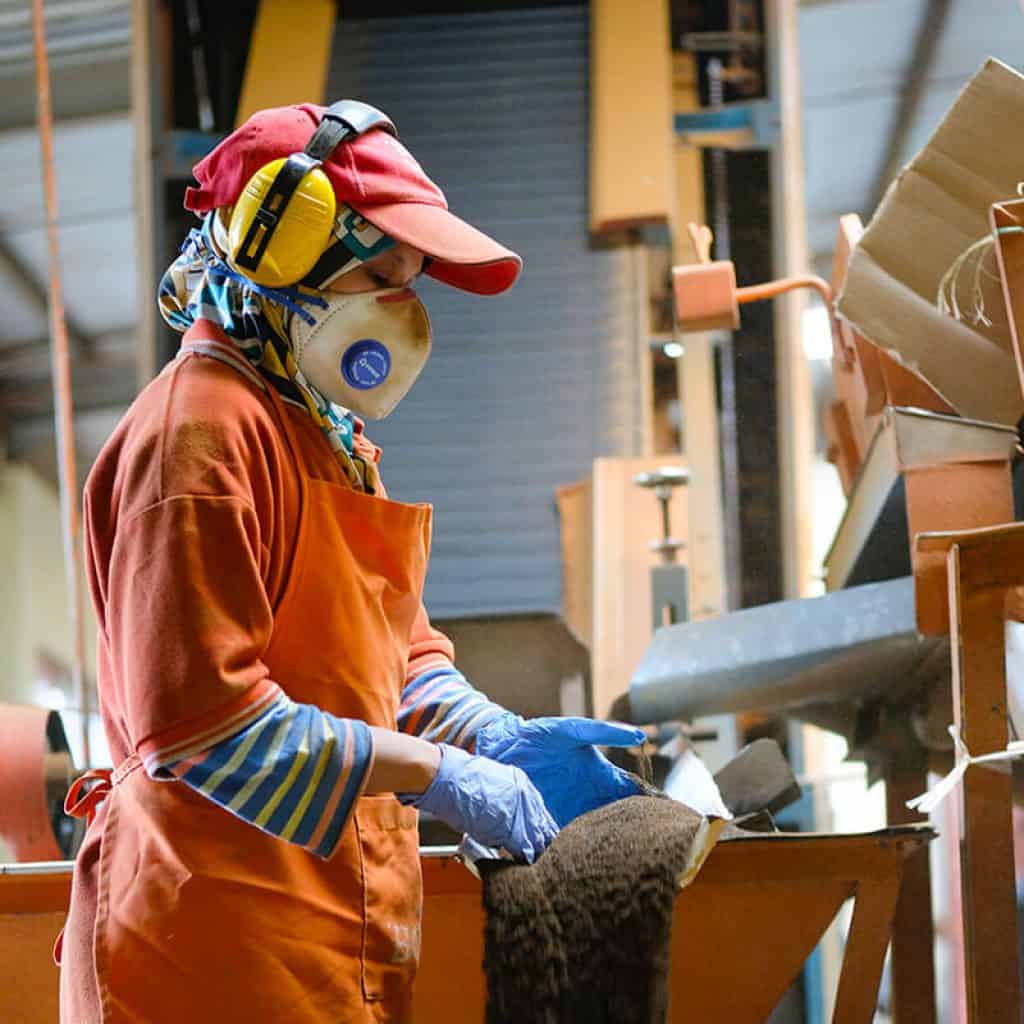

Sorting
After drying, the tea is passed to the sorting room where stalks and fibres are removed through a series of vibrating sieves. It is then graded according to particle sizes with each size having its own characteristics.

Tasting
Quality control is done by expert tea-tasters that examine the tea for colour, texture, amount of twist and evenness of grade. They will feel the leaves for crispness and check the aroma and after infusing the teas for 6 minutes, sip and test taste and aroma. A taster will make full use of his taste buds, gums and inner cheeks. It is an art in itself that requires years of experience and a fine nose.
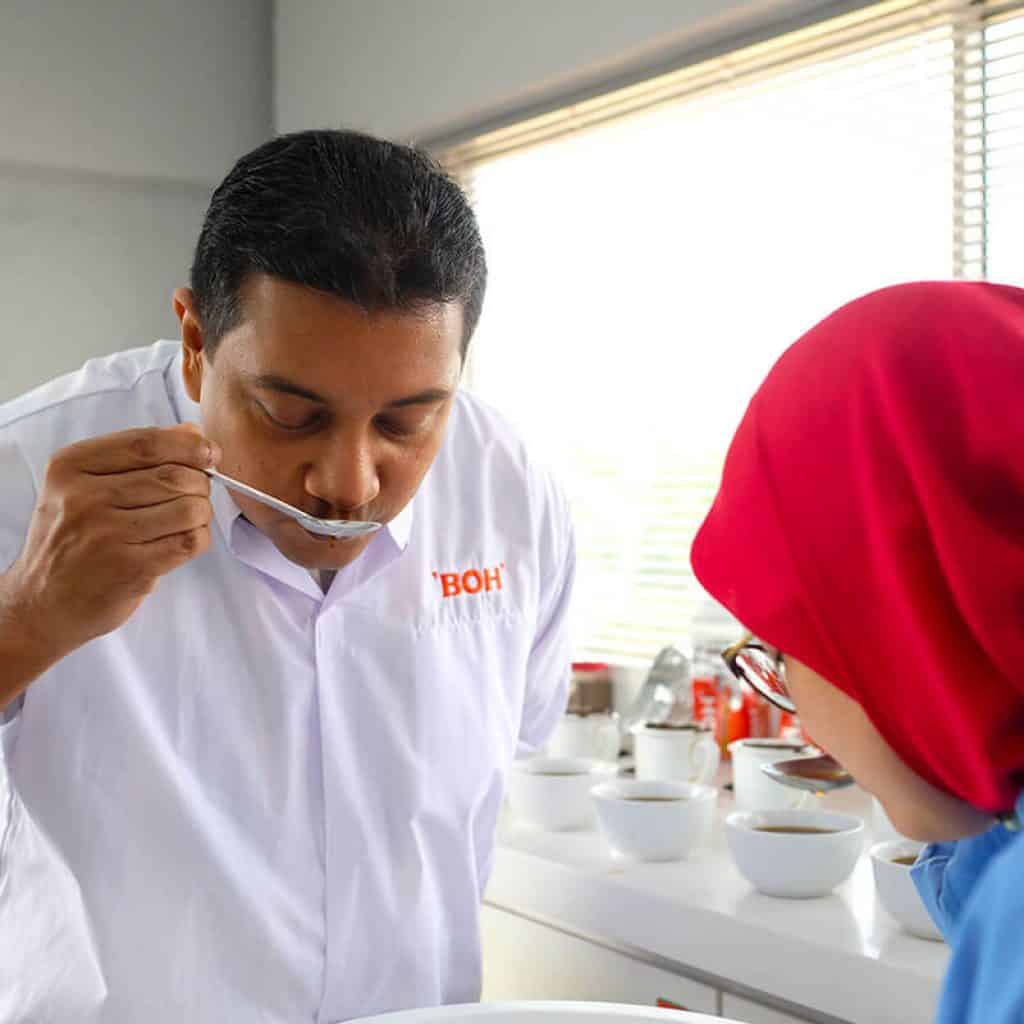


Packing
Tea is hygroscopic, hence it needs to be packaged perfectly to seal out the moisture if not it will be absorbed by the tea and further oxidation will occur. When this happens, the freshness, flavor and aroma are dulled and a flat, bitter tea will result. Packing takes place at the Bukit Cheeding site.



